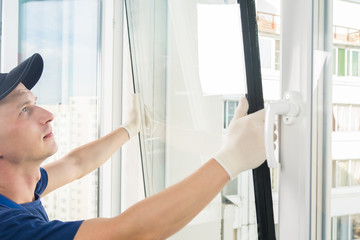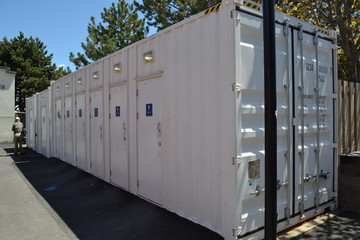Home improvement advertising can help you reach customers with measurable, targeted strategies that complement your existing marketing efforts. Look for a digital marketing agency with experience in the industry, allowing them to understand the challenges of promoting construction, renovation, and repair services.
Using effective home improvement advertising ideas, from showcasing before-and-after photos to leveraging video marketing and featuring customer testimonials, can elevate your brand’s narrative. Keep reading the article below to learn more about Home Improvement Advertising.
Facebook ads can be one of the best ways to generate home improvement leads, especially if your business is local. This platform has a massive user base and provides precise targeting to ensure that your ads reach people most likely to need your services. You can target by location, age, income, and more. In addition, you can select specific interests related to home improvement to narrow your audience even further. Using these parameters, you can create a custom audience that is highly relevant to your business and can significantly increase your return on investment (ROAS).
Homeowners seek the expertise of home improvement professionals because they lack the knowledge, time, or resources needed to complete projects themselves. They also view these projects as investments that can improve the value of their homes. To capture their attention, you need to focus on their pain points and communicate how your services can help them achieve their goals. You can do this by highlighting the benefits of your services, including increased living space, improved functionality, and a higher return on their investment.
Showcase your work to position yourself as a home improvement expert. This can be done by posting images or videos of previous home improvement projects and sharing customer testimonials. In addition, showing the behind-the-scenes process of your work can add credibility and trust to your message. This can include sharing images or videos of your team preparing for a job, working on tools, or planning the project.
Another way to attract potential customers is to offer a discount or free service. This will help you stand out from competitors and entice homeowners to visit your website. This can be done by running a competition or creating a landing page that offers a free consultation or quote.
Lastly, you can improve your ad performance by integrating Facebook Ads with CRM systems through SaveMyLeads(opens in new tab or window). This will automate the process of capturing and nurturing lead information and ensure that your ads are targeted to the right people. It will also help you maximize your ROI by ensuring that your ads are only displayed to users who are most likely to hire your services.
Google Ads
Google ads offer a number of advantages for home improvement contractors, including the ability to reach homeowners actively searching for services. They also allow you to target specific service areas and seasonal demand, ensuring that your ads are displayed when potential customers are ready to take action. Google ads also include diverse ad formats and automated optimization to help you maximize your performance. This allows you to generate more leads and improve the quality of your marketing campaigns.
The key to a successful Google Ads campaign is to know your audience and keywords. Focus on the keywords that are relevant to your business and align them with your customer journey. For example, if you offer plumbing services, consider targeting “bathroom remodel” and “kitchen renovation” keywords to target homeowners who are in the process of upgrading their homes.
To get the most out of your ad budget, prioritize keywords with high conversion rates. This will increase the likelihood that your ad will appear at the top of the search engine results page (SERP). It is also important to understand the Google Optimization Score and to avoid making blind changes based on the suggestions that it makes. Making changes to your account without a solid understanding of the impact on your goals can lead to expensive mistakes that may not be recoverable.
A comprehensive digital marketing strategy is vital to growing your home improvement business. This includes identifying the most profitable services, conducting keyword research, optimizing landing pages, and tracking performance. It is also essential to build trust with prospective clients by providing testimonials and case studies.
Homeowners often turn to local directories like Yelp, Angi’s List, and HomeAdvisor to find home improvement contractors in their area. Make sure your online profile is optimized with accurate information and services, and claim listings on these sites to increase your local map ranking. Encourage your satisfied clients to leave reviews on these sites, and respond to all feedback to demonstrate your professionalism. Finally, consider using targeted direct mail campaigns to reach homeowners in your service area. This is a cost-effective way to increase your brand visibility and generate more qualified leads.
Social media
Homeowners spend about two-and-a-half hours a day on social media, and the right home improvement advertising strategy can help them find high-quality contractor leads. These strategies can include showcasing their work, offering discounts and promotions, collaborating with influencers, engaging with followers, and utilizing targeted ads. They can also position themselves as thought leaders in the industry and build trust with potential customers.
When it comes to local marketing, social media and mailshots are still effective ways to promote your business. However, combining them with an automated system like Meta Advantage+ can maximize the impact of these methods and deliver better results. Using this system, you can schedule your campaigns to run during peak browsing times on the weekends and evenings when people are at home. This way, you can reach potential customers when they are most likely to be considering a renovation.
Showcasing your work is an essential part of any home improvement advertising strategy. Posting photos and videos of past projects can help you attract high-quality contractors, and it can also increase your visibility in the search engines. Additionally, you can post helpful tips and tricks about home remodeling that will show your expertise and earn you the trust of potential clients.
Social media can be an excellent source of leads for home remodelers, painters and designers. However, tracking the return on investment from these platforms can be difficult. While some businesses claim that they have seen a direct increase in sales from their social media activities, it is important to remember that the majority of social media traffic does not result in a sale immediately. This is especially true for services that are not e-commerce, such as home improvement.
Print ads
Print advertising can be an effective way to target potential customers in your local area. It can build trust with consumers and help you stand out from the competition. Studies have shown that consumers trust print ads more than digital ones. Moreover, print ads have a lasting impact and can inspire people long after they’ve read them.
Home improvement businesses can use a variety of print marketing tools to reach prospective customers. Some examples include newspaper spreads, local magazine ads, direct mail pieces, and door hangers. These materials can showcase your products or services, highlight a special offer, and direct visitors to your website. Additionally, you can create a print newsletter or a home tips guide to help your audience solve their problems.
When creating a print ad, focus on crafting a message that resonates with your target audience. Use high-quality photos of previous remodeling projects and customer testimonials to increase the impact of your message. Also, provide clear call-to-actions and contact information to help customers take action. You can also incorporate unique selling points, such as eco-friendly materials or custom designs, to engage and inspire potential clients. Also, consider highlighting your local presence and involvement in the community to reinforce your brand identity. Lastly, you can target your ads to specific locations using geo-targeted flyer distribution services. This will ensure that your message reaches the right audience at the right time, increasing your return on investment.











 Water leaks in the ceiling can cause mold growth, which can be a health hazard and also cause structural damage. These problems can be difficult to spot, but if the problem is serious, it needs to be taken care of as soon as possible.
Water leaks in the ceiling can cause mold growth, which can be a health hazard and also cause structural damage. These problems can be difficult to spot, but if the problem is serious, it needs to be taken care of as soon as possible.